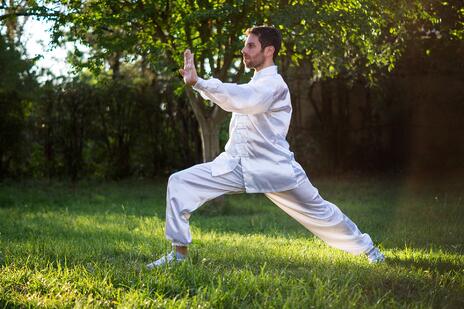
5 Tips for Avoiding Back Pain While Playing Your Guitar
Jun 23, 2021A Guest post by Dr. Brent Wells
Playing the guitar is one of life’s simple pleasures that millions of people enjoy. It doesn’t cost much, it’s endlessly entertaining learning new songs and techniques, and even beginners can pick up a few tunes fairly quickly, stimulating their interest in their new musical pursuit.
The one thing no one mentions about guitars are the possible injuries that can happen. It seems so innocent, what could possibly happen while playing guitar? I’m a part-time enthusiast and in addition to some of my own injuries, I bet I’ve seen them all- from carpal tunnel to inflamed neck tendons, playing the guitar can be pretty dicey sometimes.
One thing I noticed right away when I was learning was how my middle and upper back began to ache. When the pain started, I wrote it off as a part of my profession (yep, when I’m not practicing my guitar, I’m the best reviewed chiropractor in Alaska!). Bending over people most of the day can put a kink in your back, but over time, I began to realize that this pain occurred shortly after practice sessions.
I practiced in front of a video camera one day and wow, was I ever shocked! All good posture habits and more apparently went out the window when I was practicing!
If you would like to avoid seeing a chiropractor, take the advice of this chiropractor and follow my top 5 tips for preventing back pain while playing or learning to play your guitar.
5 Tips for Avoiding Back Pain and The Chiropractor
Tip #1 - Don’t Slouch When Sitting
That right there was my main source of pain. Sitting on the edge of my seat and not all the way back, my shoulders rounded, my head pushed out in front, I was slouching over my instrument to check out my finger positions. All. Completely. Wrong.
You can do what I did and use your phone or camera to film yourself. You will find that at the beginning, your posture is fine (probably because you know the camera is on!) but it only took about 10 minutes for me to slouch my way to some ugly posture.
If you are sitting, you should put your back and hips against the backrest. It can feel awkward to look at your hands from that position, but you can do it. Alternately, if you want to see your right hand, you could sit in front of a mirror. This has the advantage of allowing you to see both hands while sitting upright. If you are experiencing neck pain, chances are that it’s from looking at your hands.
Tip #2- Stretch During Practice
Assuming you are right-handed, you are using your left hand to make chords. This means that the fingers, hand, and wrist are doing nearly all the work, while the forearm and upper arm not so much. This can lead to tendonitis in the elbow and carpal tunnel. Set a timer for 20-minute intervals and stop for just 2 or 3 minutes to stretch your arms, fingers, neck, and hands. It would also be a good idea to stretch those hamstrings as well, so you keep your lower back protected.
Tip #3 - Consider Practicing Tai Chi

Too many younger Americans think that Tai Chi is only for the older generation who find “real exercise” too difficult or strenuous. This is far from the truth! Tai Chi is the perfect “workout” for musicians as it stretches every part of the body, improves balance and posture, and requires that you remain focused, something all musicians can benefit from. You will find that Tai Chi reduces mental fatigue and practicing or performance injuries while helping you to develop precision and good posture habits.
Tip #4 - Keep Your Whole Body in Mind When Standing
While you might see those cool rock stars holding those guitars down below their crotch or standing with one foot in front of the other during most of the concert. It might look cool, but it is surely costing them some serious pain. When you stand with one leg in front of the other, the front leg is doing all the work and the back leg will become weak, causing your body to become imbalanced.
You might also find yourself doing the swayback thing as you see Joe Perry doing here, pushing the guitar out with your belly while you are really rockin’ out. You can get away with this for a few seconds, but done repeatedly, you are going to find that you have a really sore low back very quickly. Watch your posture when standing!

Tip #5 - Get Regular Massage
Massage will help keep your muscles and the connective tissue flexible and improve the circulation to the muscles, which allow them to heal as well as develop. You will find all sorts of recommendations for what is the “best” massage, but in my experience the best massage is the one that feels good and works for you. You will find that nearly all chiropractic clinics offer massage therapy, which makes going to the chiropractor for regular adjustments and getting a massage a “two for one” deal. No need to go to one place then another, you can kill two birds with one stone at your local chiropractic clinic. Massage therapy has multiple benefits, including relief from stress and anxiety. Once you start getting regular massages, trust me, you will wonder why you waited so long to take advantage of this therapy!
A Closing Thought
Soreness is when you can feel a warmth or tiredness in an area while pain will either prevent you from playing or it shortens the amount of time you are able to play.

That being said, soreness is normal at one time or another. Pain is not. Do not continue to play if you are in pain! You will make things much worse by trying to “push through the pain.” Stop and ice the area off and on for the next 24 hours. Wait a full 72 hours before picking up your guitar again. If you still feel pain after 72 hours, it’s time to call your local chiropractor.
A Guest post by Dr. Brent Wells
Dr. Brent Wells, the founder of Better Health Chiropractic & Physical Rehab. Dr. Wells believes in treating people, and patients, the way he would want to be treated. Born and raised in Southern California, Dr. Wells received his Bachelor of Science degree from the University of Nevada and his Doctor of Chiropractic Medicine degree from Western States Chiropractic College. He, his wife Coni, and their three children live in and enjoy the great outdoors in Alaska. Currently, he works at Assignmentbro.com as a writer and editor.








